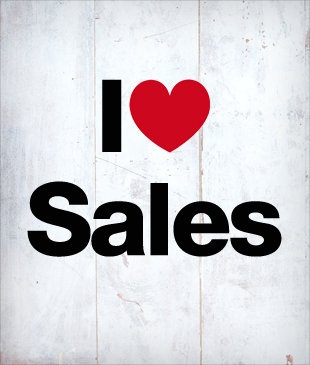There are many solutions that are targeted at a niche, that solve a specific problem. Selling these is relatively easy. You know the target, you know the problem. The challenge comes with the horizontal solutions, or ones that apply to wide variety of industries and business problems. There is tremendous potential opportunity there and yet they are devilishly difficult to sell for a small company. The problem is focus.
When you have a solution that you can sell to ten different types of companies, where do you start? If you have deep pockets, perhaps you go after every manner of opportunity, but if you are a small company, you neither have the resources nor the bandwidth to tackle all opportunities. So what does one do?
This is an issue I have dealt with in the past working with my clients, but it came to top of mind after a recent conversation with a company that has a horizontal solution. I have thought about this subject over many years and have a viewpoint on this. I thought I’d share my current thinking on this subject as it may be useful to some of you.
Think small – The solution has wide application but it helps to narrow the scope when you are starting. Figure out a specific business problem, in a specific industry, in a specific geography to address. Focus helps you with both your targeting as well as your messaging. In addition, it is an effective use of limited resources.
More cheetah, less monkey – Cheetahs need focus to survive. When you see them on a hunt, you can really see they are focused. Monkeys on the other hand, forage for food and are easily distracted. The tendency in startups is to go after everything – mostly through a combination of optimism and desperation. In addition, there are too many distractions when you are getting started. Be aware of that. Focus only on what is important.
Learn from Agile – The Agile software development methodology has a lesson for entrepreneurs. For those of you who are unfamiliar with it, Agile advocates breaking a large project into smaller, bite-sized chunks. These chunks, called Sprints, deliver specific functionality in a very short period of time. The idea is to incrementally build the software solution with all stakeholders constantly aware of the value addition. This is in contrast to the monolithic model of software development where big projects were delivered after months of work and considerable expense, often to users who clearly did not want what they got. You should think of your go-to-market strategy as a series of Sprints. Identify a business problem/target audience, develop a tactical plan and test it out. If after putting in effort, it is not working, change. You should always be looking to fine-tune your go-to-market, but at the same time have the discipline to stick to a plan, for a period of time, before starting on something else.
Leverage your successes – I am a big believer in this and have harped about it at length. If you have a success with a client, see if you can approach similar companies with a similar proposition. Do it consciously, with a plan and a value proposition. Even though this may be obvious, many companies, especially ones with a broadly applicable solution, seem to ignore this.
After running my own consulting outfit for a couple of years, I have a newfound respect for entrepreneurs. Starting and running a company is not for the faint-hearted. It is very difficult to make money, contrary to the feeling one develops working in the corporate world, where big paychecks just happen if you are good. With all the stress and uncertainty of working in a startup, having some structure and discipline around sales is critical. Whether you like my approach or not, please do consciously think about what will make you more effective with limited resources. It will be well-worth the effort.
Agree. Disagree. Or have another viewpoint. Would love to hear your thoughts.


